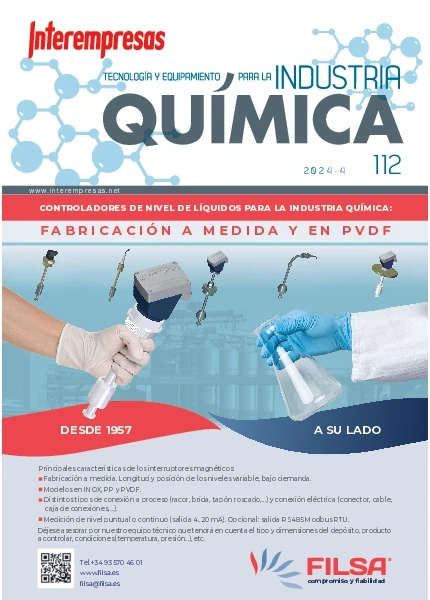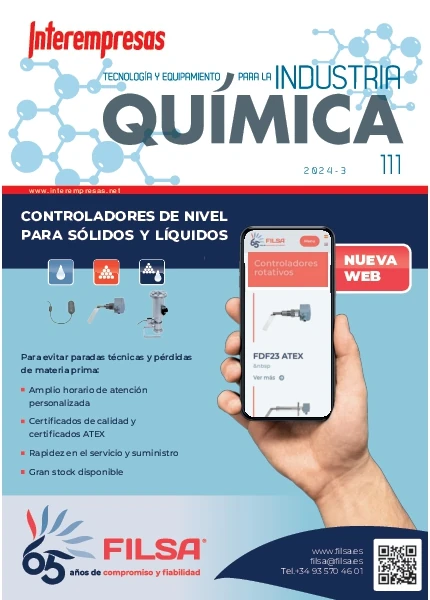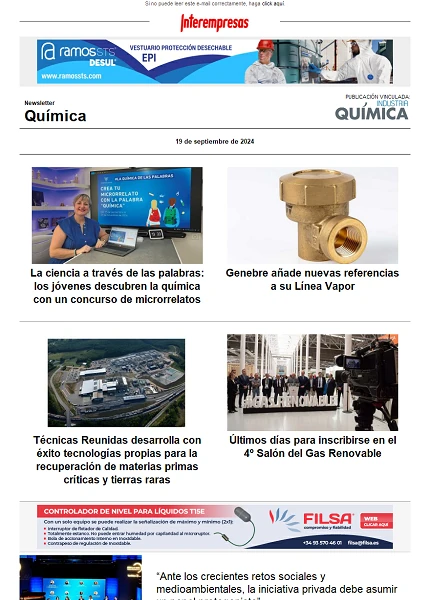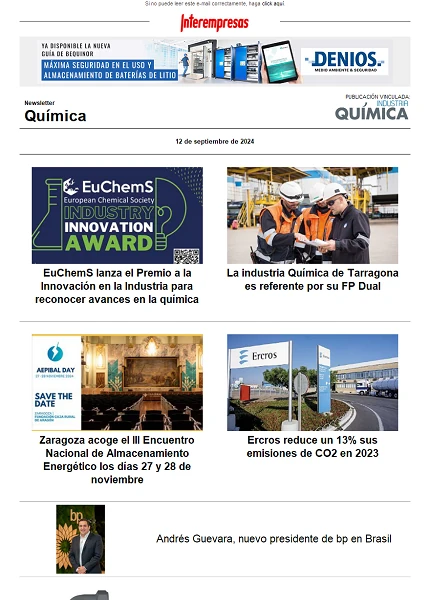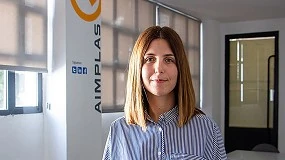Almacenamiento de barnices, pinturas y disolventes en armarios protegidos
¿Cómo saber cuando un líquido es inflamable?
Todos los productos químicos han de venir acompañados por su ‘Ficha de Datos de Seguridad’. El proveedor de productos químicos está obligado a entregarla en la primera compra de producto y la revisión de la misma cada vez que sea modificada.
En esta ficha de datos de seguridad, en el apartado 9 se encuentran las características fisico-químicas de la sustancia o producto químico. Si ese punto de inflamabilidad no es superior a 60 °C nos encontramos con un líquido inflamable (según la nueva clasificación del Reglamento CE 1272/2008 sobre clasificación, etiquetado y envasado de sustancias y mezclas (en adelante CLP)
Según esta nueva clasificación en la ficha de datos de seguridad se encuentran las siguientes indicaciones de peligro:
- H224: Líquido y vapores extremadamente inflamables
- H225: Líquido y vapores muy inflamables
- H226: Líquido y vapores inflamables
Por otro lado, el CLP también considera inflamables el gasóleo específico, combustible diésel y aceites ligeros de calefacción a pesar de tener un punto de inflamabilidad superior a los 60 °C.
Si el preparado o mezcla en lugar de estar clasificado según CLP todavía tiene la clasificación según el antiguo criterio (RD 255/2003, de 28 de febrero de 2003, por el que se aprueba el Reglamento sobre clasificación, envasado y etiquetado de preparados peligroso) las frases de riesgo que aparecerán en la ‘Ficha de Datos de Seguridad’ son las siguientes:
- R10: Inflamable
- R11: Fácilmente inflamable
- R12: Extremadamente inflamable
Por último, un líquido inflamable estará incluido dentro de la Clase 3 del ADR (Acuerdo Europeo sobre el transporte internacional de cargas peligrosas por vía terrestre)
Además de estas frases, se podrán diferenciar un preparado o sustancia inflamable porque llevará el pictograma que así los diferencia:
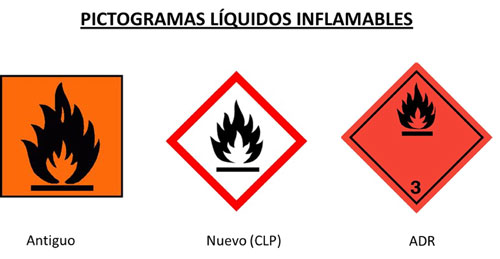
¿Cómo almacenar pequeñas cantidades de líquidos inflamables?
En la ‘Ficha de Datos de Seguridad’ se encuentran datos como los materiales constructivos compatibles con el producto químico a almacenar, los productos químicos incompatibles con él y los medios de extinción adecuados.
Por otro lado es preciso tener en cuenta que un líquido inflamable mal almacenado puede ser una potencial fuente de incendio y que en caso de incendio generado por otras causas puede ocasionar que se magnifique el mismo.
Es preciso por ello almacenar correctamente estos líquidos. El Reglamento de Almacenamiento de Productos Químicos (RD 379/2001 modificado por el RD 105/2010, en adelante APQ), y en particular la Instrucción Técnica Complementaria MIE-APQ 01 (en adelante ITC MIE APQ-01) es de aplicación a partir de 50 L de inflamables y además dentro de su campo de aplicación incluye también a los productos combustibles con un punto de inflamabilidad hasta 150 °C.
En el caso de pequeños recipientes, la solución de almacenamiento más sencilla es un armario protegido.
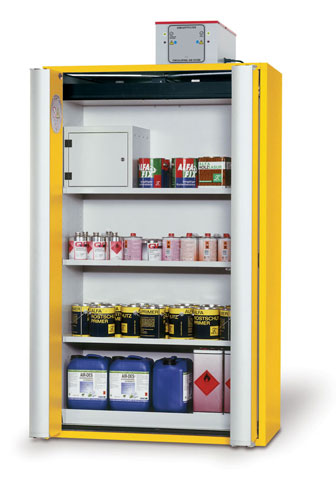
¿Qué requisitos ha de cumplir un armario protegido?
Desde 2005 la norma que dicta los requisitos de un armario protegido es la UNE-EN 14470-1. Esta norma sustituye a la anterior UN 1634-1 y es específica para armarios protegidos para líquidos inflamables.
Los diferentes elementos del armario protegido han de cumplir unas ciertas características para que este pueda pasar la prueba de fuego y por tanto poder ser catalogado como RF ‘x’ minutos.
El Reglamento APQ exige como mínimo que los armarios protegidos tengan una resistencia al fuego de 15 minutos, esto es debido a que esta es la clasificación mínima para este tipo de equipos. No obstante la Norma UNE- EN 14470-1 aclara que es preciso escoger entre los diferentes tipos de Armarios Protegidos en función de las circunstancias particulares de cada instalación. Es preciso que el armario de seguridad nos proporcione el tiempo necesario para:
- Desalojar al personal que trabaja en la instalación afectada
- Que los bomberos accedan a las instalaciones para poder extinguir el incendio
Partes de un armario protegido
Los diferentes elementos han de tener las siguientes características:
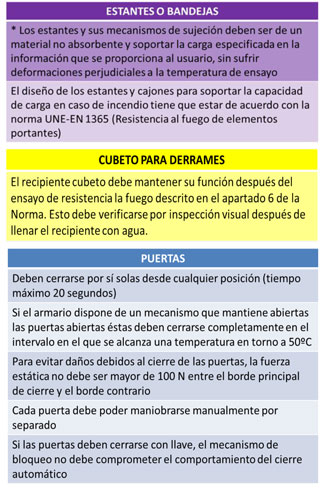

¿Cómo saber que ‘mi’ armario protegido cumple estos requisitos?
Como se ha comentado anteriormente, el armario ha de ser sometido a una prueba de fuego por lo que todos los armarios han de tener un Certificado de Prueba en el que se certifique la resistencia al fuego del mismo. Es preciso solicitar este certificado al fabricante o suministrador del equipo, y verificar su validez.
Existen en el mercado armarios que se dicen protegidos y que no lo son, por ejemplo:
- Armarios con resistencia al fuego de materiales (por ejemplo EI-60) pero sin haber pasado la prueba de fuego que pide la UNE-EN 14470-1
- Armarios que se denominan protegidos pero que no tienen RF, esto es debido a que en normativas como la de EE UU se permiten Armarios sin RF, pero no son válidos para justificarlos como Armarios Protegidos según la ITC MIE APQ 01 en España
- Armarios que no cumplen los requisitos de la UNE 14470-1 a pesar de que nos presenten un Certificado. Se han identificado armarios protegidos que no cumplen los requisitos exigidos. Existe una web en la que se pueden consultar los fabricantes y algunos de los suministradores de estos equipos: www.icsms.org, la base de datos europea más completa sobre productos de consumo y profesionales que han sido testados y se ha probado que no cumplen los estándares que exigen las autoridades al respecto.

